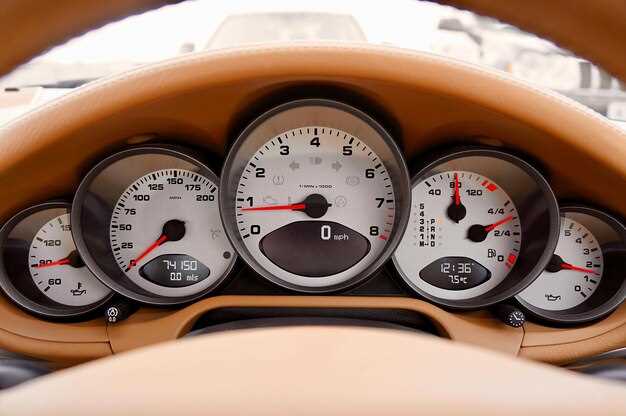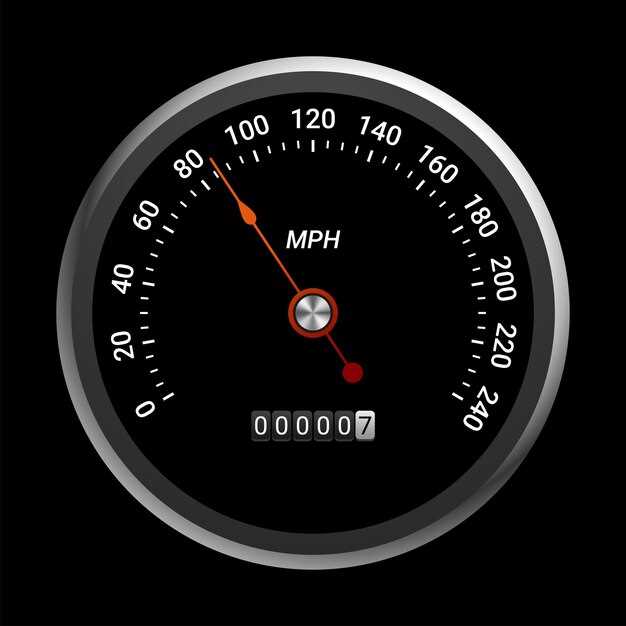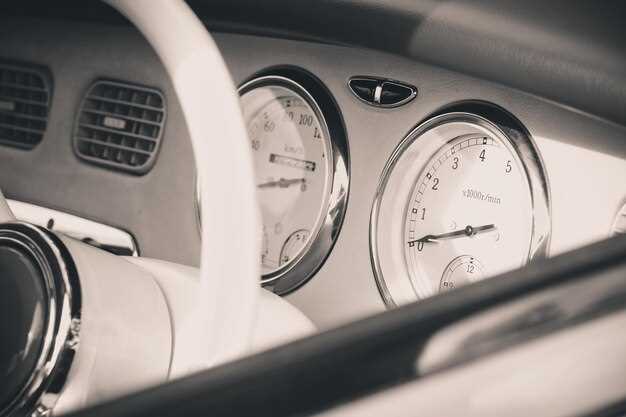
The allure of classic Porsche models is undeniable, with their timeless design and engineering excellence. However, the charm of these vehicles often fades when their instrumentation, specifically the gauges and clusters, deteriorates over time. Restoring these components is not just about aesthetics; it is crucial for ensuring that the vehicle functions correctly and maintains its value. One of the key brands associated with these gauges is VDO, known for producing high-quality instruments that have stood the test of time.
In the restoration process, it is essential to understand the differences in the various gauge types and their specific requirements for refurbishment. Each classic Porsche model has unique features, and the restoration of VDO gauges requires meticulous attention to detail to preserve their originality. From replacing faded dials to recalibrating the internal mechanisms, every step is vital for achieving a flawless finish that mirrors the factory standards.
Not only does restoring Porsche gauges enhance the vehicle’s visual appeal, but it also contributes to a safer driving experience. Accurate readings from speedometers, tachometers, and fuel gauges are critical for optimal performance. Therefore, reviving these historical components should be viewed as an investment in both the car’s heritage and operational integrity.
Assessing the Condition of Vintage VDO Gauges
When restoring classic Porsche models, evaluating the state of the vintage VDO gauges is crucial for an authentic dashboard revival. These gauges often endure years of wear, exposure to elements, and mechanical stress, which can significantly affect their functionality and appearance.
First, visually inspect the gauge faces for signs of fading, scratches, or discoloration. The clarity of the markings and digits is essential for readability. A discolored face not only reduces aesthetic value but may also indicate that the underlying materials are deteriorating.
Next, check the lens of each gauge. Cracks or cloudiness can obscure readings and suggest that the gauge has experienced temperature fluctuations or physical stress. If the lens is damaged, consider replacement options to maintain transparency and visual appeal.
It’s vital to test mechanical components, such as the needle movement. A stuck or erratic needle can indicate internal damage or outdated lubrication, hindering accurate readings. Gently manipulating the needle can help reveal whether it’s functioning properly.
Finally, assess the electrical connections of the gauges. Corrosion or fraying wires can affect performance, and ensuring clean, secure connections is paramount for reliable gauge operation. Evaluate the backlight functionality, as proper illumination enhances visibility, especially in low-light conditions.
By thoroughly assessing each of these elements, you can gain a comprehensive understanding of the condition of vintage VDO gauges, setting the foundation for effective restoration and maintaining the integrity of the dashboard in classic Porsche vehicles.
Step-by-Step Guide to Repairing Dashboard Components

Repairing dashboard components, particularly for classic Porsche models, requires patience and attention to detail. This guide outlines the essential steps to effectively restore these vital parts, ensuring a precise and functional dashboard. Follow these steps to breathe new life into your VDO gauges and clusters.
Step 1: Assessment and Preparation
Begin by thoroughly examining the dashboard components. Look for any visible signs of wear, rust, or damage. Carefully document any issues you find, as this will guide your repair process. Gather necessary tools such as a screwdriver set, soldering iron, adhesive, and replacement parts if required.
Step 2: Disassembly
Once you have assessed the condition, proceed with the disassembly of the dashboard. Remove any screws and clips holding the VDO gauges in place. Handle components gently to avoid further damage. Keep all screws and small parts organized for reassembly later.
Step 3: Cleaning
Clean the disassembled components with a soft cloth and a suitable cleaner. Pay special attention to the contacts and circuit boards to remove dust, debris, and oxidization. For stubborn contaminants, consider using isopropyl alcohol. Ensure everything is completely dry before moving on to the next step.
Step 4: Repairing or Replacing Components
Inspect each component for functionality. If any of the VDO gauges are malfunctioning, you may need to replace particular parts such as bulbs, resistors, or even the gauge itself. Solder connections if necessary, ensuring a strong bond for reliable conductivity. If a gauge is beyond repair, sourcing an authentic replacement is recommended.
Step 5: Reassembly
Once repairs are complete, begin reassembly. Follow the reverse order of disassembly, taking care to reinsert screws and clips securely. Double-check the alignment of each gauge within the cluster to ensure an aesthetically pleasing finish. If applicable, connect wiring harnesses carefully, making sure all connections are snug and properly seated.
Step 6: Testing
Before final installation, test each component to confirm functionality. Reconnect the battery and turn on the ignition, monitoring each VDO gauge for proper operation. Look for accurate readings and ensure that the indicators respond as expected. If any issues arise, revisit the previous steps to troubleshoot and correct them.
Step 7: Final Installation
After verifying that all parts are functioning correctly, install the dashboard back into the vehicle. Ensure all mounting points are secure and that the dashboard fits snugly without any gaps. Reconnect any additional electrical components, such as lights and climate controls, and perform a final check to confirm everything operates smoothly.
This step-by-step guide will help you restore your classic Porsche dashboard components with confidence, preserving the heritage and functionality of your vehicle’s interior. A well-maintained dashboard can significantly enhance the driving experience in classic models.
Upgrading Electronics While Preserving Original Aesthetics

Restoring Porsche gauges and clusters for classic models is not just about aesthetics; it encompasses integrating modern electronic components that enhance functionality without compromising the original appearance. Upgrading the electronics, particularly with VDO instruments, allows for improved performance while maintaining the nostalgic charm of classic Porsches.
When considering upgrades, here are the key factors to keep in mind:
- Compatibility: Ensure that any new electronic components are compatible with existing systems. VDO offers various products specifically designed for classic applications, ensuring seamless integration.
- Aesthetic Preservation: Choose electronic components that mimic the original design closely. This includes matching the style of the gauge faces, dial colors, and needle designs to create a cohesive look.
- Functionality: Modern VDO gauges may incorporate features like digital readouts and advanced sensors which provide more accurate data. This enhancement improves reliability while retaining the vintage appeal.
To successfully upgrade the electronics, the following steps are recommended:
- Assessment: Begin by assessing the current condition of the gauges and clusters. Determine which components need replacement or enhancement.
- Selection of Parts: Choose high-quality replacement components from reputable manufacturers. VDO is a go-to brand known for precision and reliability in automotive gauges.
- Installation: Proceed with installation carefully. Maintain original wiring where possible and ensure that new components are installed in a manner that does not alter the original layout of the dashboard.
- Calibration: After installation, calibrate the new gauges to ensure they provide accurate readings. This step is crucial for performance optimization.
Lastly, when restoring classic Porsche gauges, documenting the process can be beneficial. This documentation helps illustrate the balance achieved between modern upgrades and classic aesthetics, adding value for future owners and enthusiasts.
 Skip to content
Skip to content





